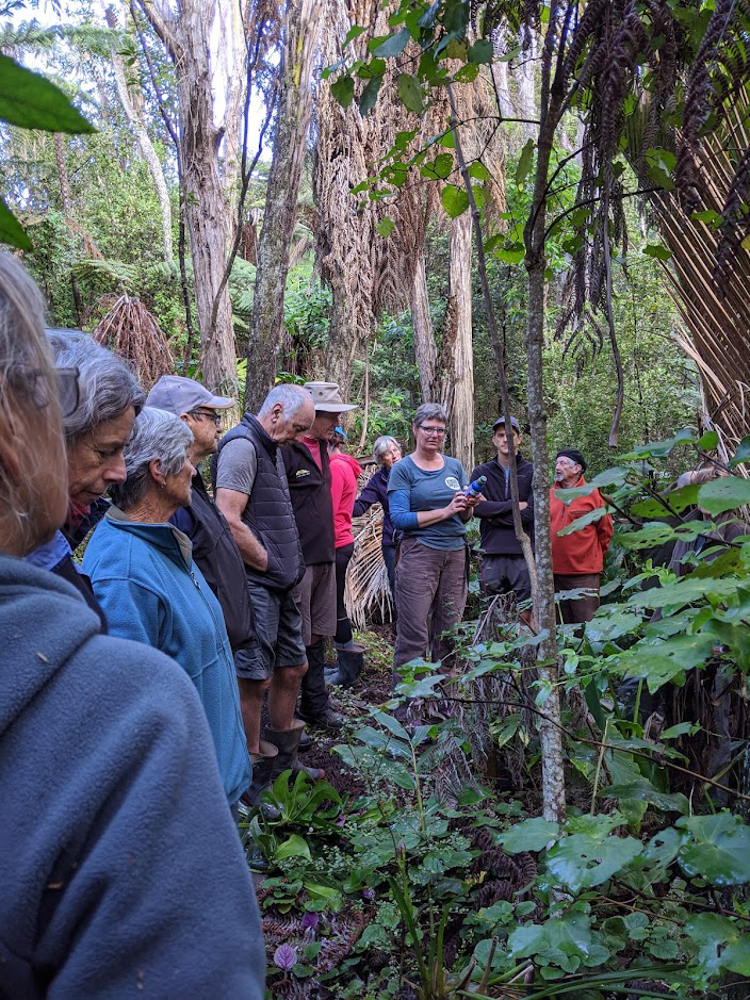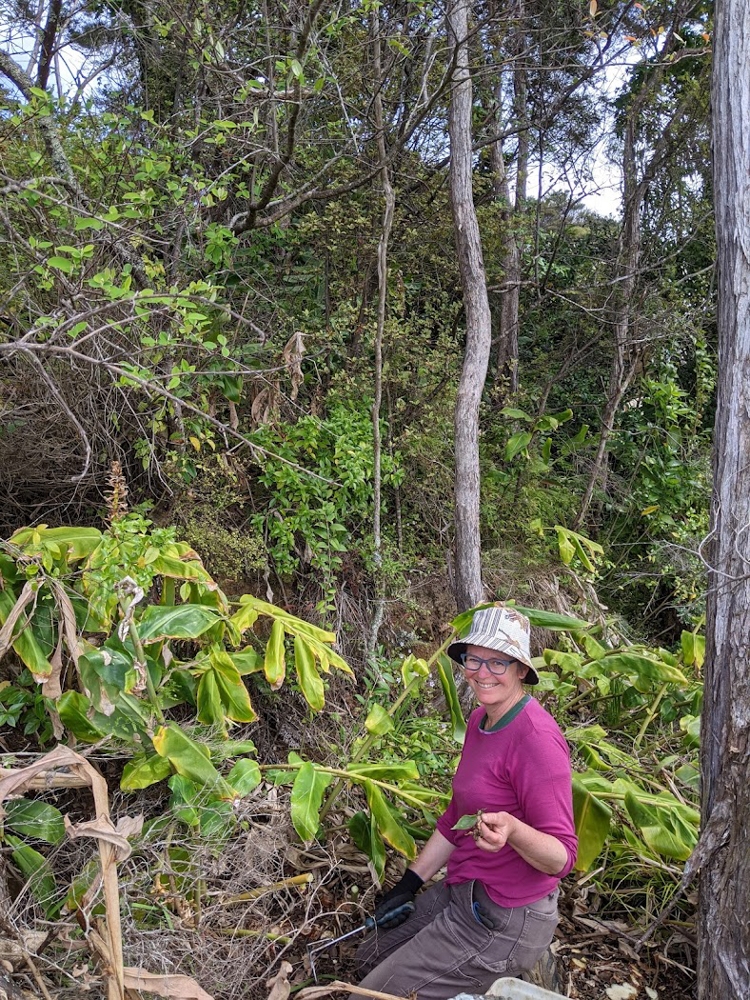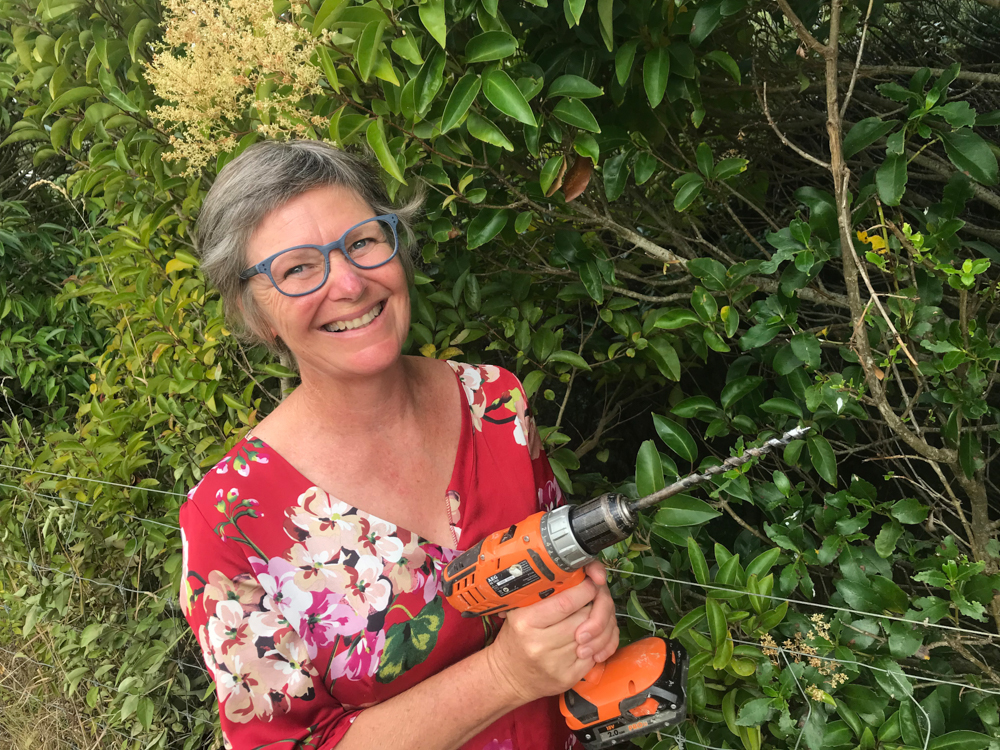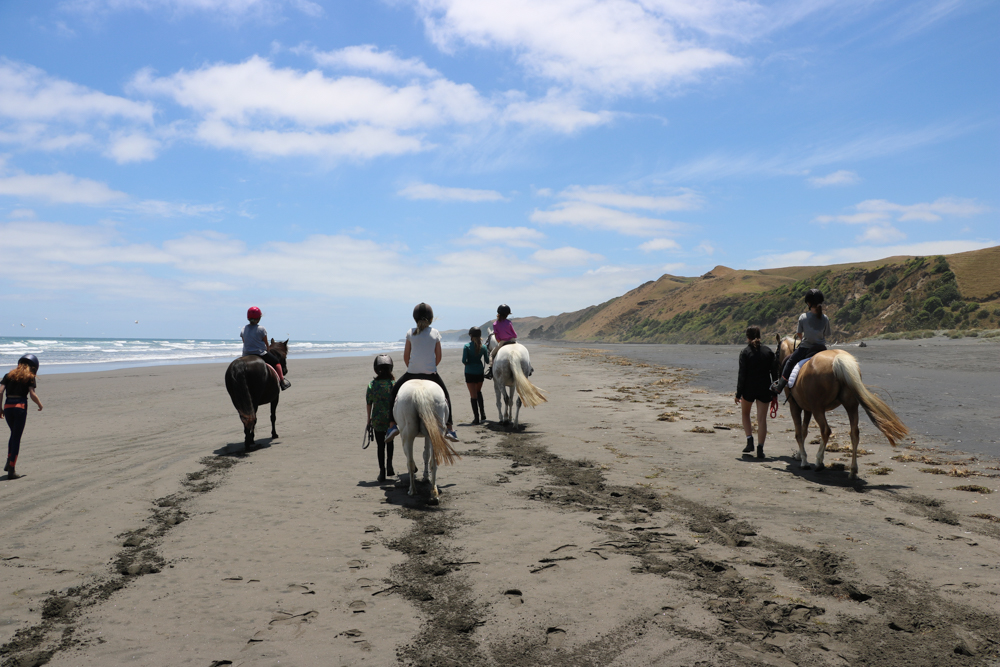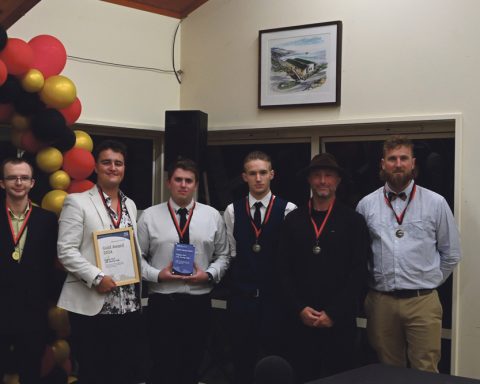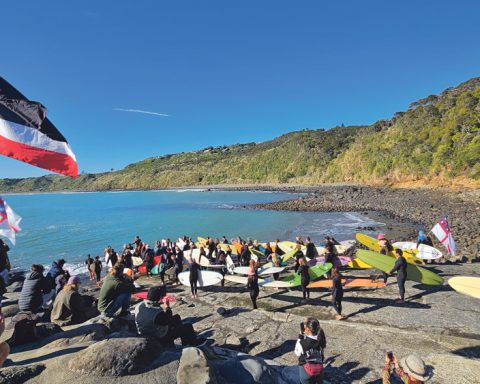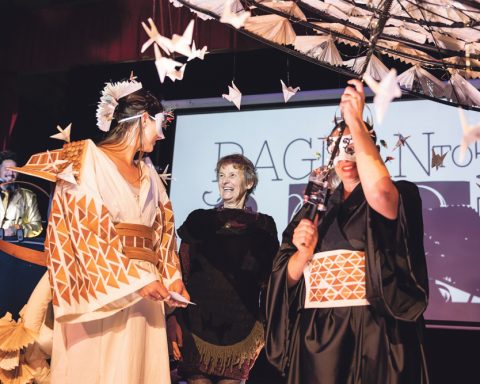There’s a stand of dead privets on the righthand side of State Highway 23 near a bus shelter as you head into Raglan.
It’s the work of self-confessed crazy lady and whoever she got to join her in a crusade to rid the coastal town of every – expletive – privet, along with combating a host of other pest plants.
Leanne Steel spends “hours, days, weeks, months” doing the hard graft of removal “because it’s very important” to her.
“People think I enjoy doing this, but I don’t. I was almost upside down under a privet the other day and there was gorse everywhere and I thought, who does this?
“But I do this because it’s really important to me. This very unique biodiversity we have here in New Zealand is found nowhere else in the world. It’s very beautiful and it’s being completely overwhelmed by pest plants. Our birds, if we leave these plants, will have nothing and leave. Is this the kind of bush we want?”
Leanne applies for funding to help pay for her weed-busting armoury. Last year, Waikato Regional Council granted Leanne $1451.25 from the Small Scale Community Initiatives Fund (SSCIF) to help pay for herbicides and other tools required to control pest plants. The SSCIF supports community groups and individual landowners undertaking ecological restoration through pest animal and pest plant control.
Leanne also took full advantage of a successful funding application to the regional council’s Environmental Initiatives Fund by Xtreme Waste Zero, which received $39,935 over two years for Whaingaroa (Raglan) weed action and collaboration, part of which included free weed disposal at the Xtreme Waste facility.
“I really tried to rev that one up,” says Leanne, who set up working bees around the town and got in skips for the free weed disposal.
Leanne teaches anyone who wants to know about pest plants and how to get rid of them, and her current focus for pest plant removal is Greenslade Road (her backyard), the Kaitoke walkway and any privet in Raglan.
Leanne considers privet to be lower hanging fruit.
“There is greater awareness of privet. People don’t want it because of asthma and hay fever, so it’s an easy target. But do they know what Japanese knotweed is, or climbing spindleberry, boneseed or evergreen buckthorn?”
Climbing asparagus is one of the worst pest plants, in Leanne’s opinion, and that’s why she set up a working group to weed bust the Kaitoke walkway.
“There are places where you can’t see the bush for the climbing asparagus. This is one of three shade tolerant species that’s overwhelming our native bush.” (The others are Tradescantia and wild ginger, also widespread in Raglan.)
Leanne says while there is a growing awareness of pest plants and the need to control them, New Zealand still has a long way to go.
“Most people don’t understand that all we see now is degraded ecosystems; we’re used to it. Ohhh, look, a photograph of a beautiful view – it generally has pampas or agapanthas or some other type of pest plant in it.
“We need to have a relationship with our native species if we are to care. When I was young, my parents used to drag me kicking and screaming into the bush – how I hated it – but I am really grateful that they did now.”
Leanne says pest plant control is everyone’s responsibility. “People say the council should do that, or ‘they’ should do that. Who are they? That’s us! The council can’t do it all. We are the citizens, and it is our responsibility.
“Just do your own patch. If everyone did their own patch and street frontage we’d be winning.”
Waikato Regional Council
LINK TO STORY ON WEBSITE: https://bit.ly/35LVBwD
